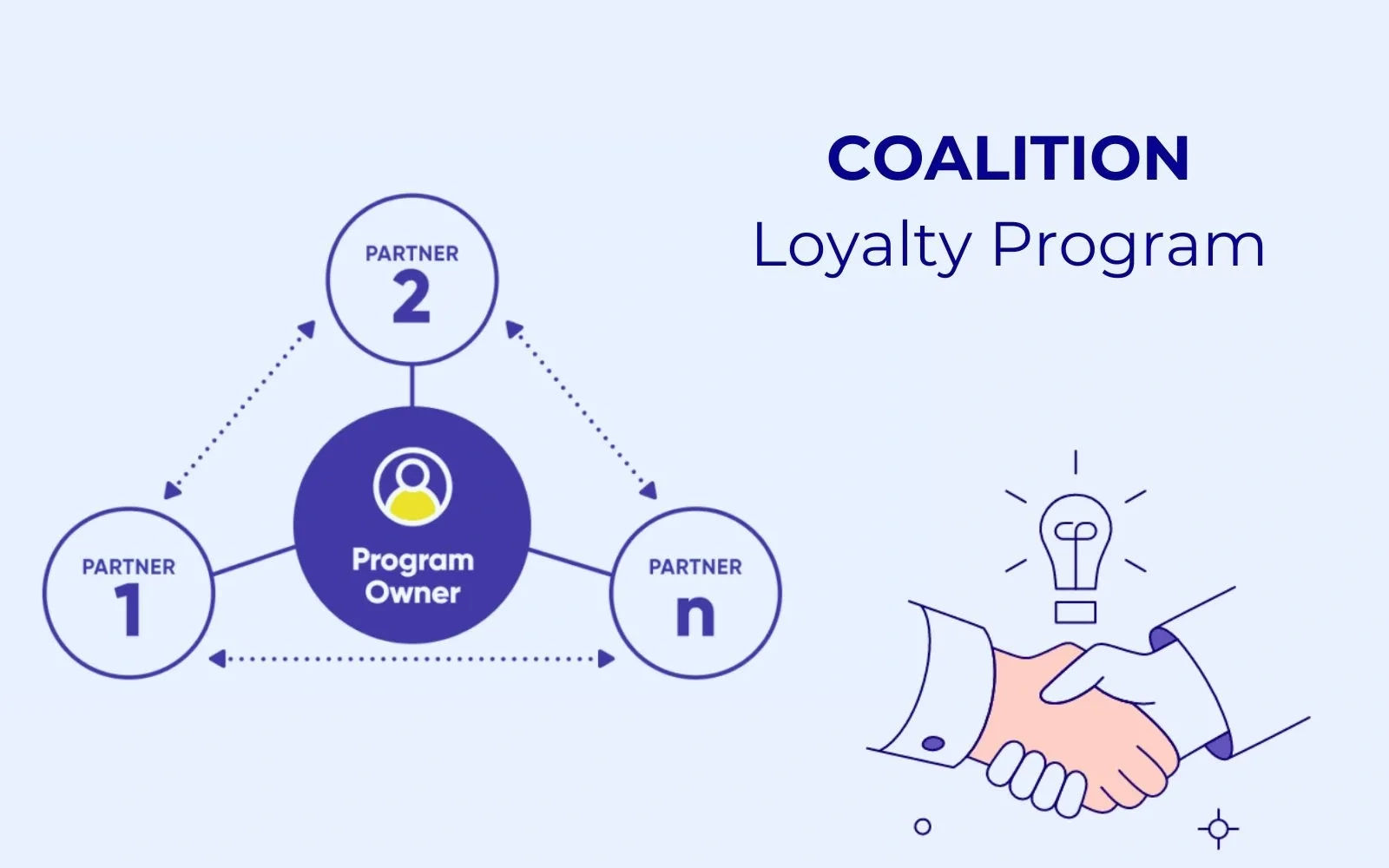How To Design Winning Loyalty Program Strategies
To create winning loyalty program strategies, you need to: understand customers, identify motivations, analyze competitors, give engaging rewards, choose the right loyalty program
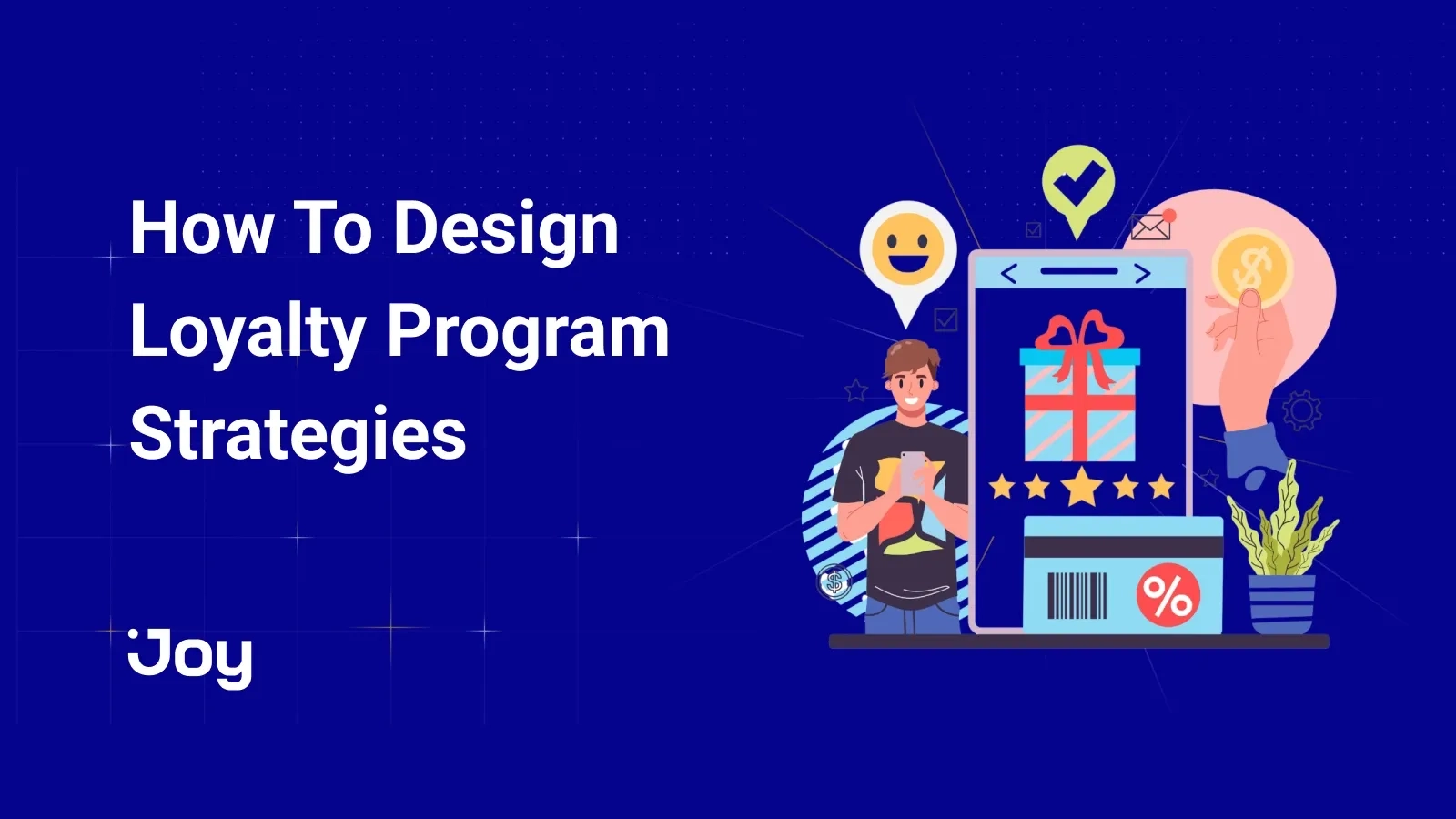
Customer loyalty has now become the ultimate growth engine. But, how to differentiate your program from others? Well, it all comes down to your goals, vision, and loyalty program strategies.
If you’re just starting out, this article is for you! We’ll show you the basics of creating a loyalty program that really works with actionable steps you can take to build a program that not only increases sales but also strengthens your brand.
Let’s dive in!
What Is a Loyalty Program Strategy?
A loyalty program strategy is a structured approach businesses use to design, implement, and manage their customer loyalty programs. It outlines the goals, structure, and mechanisms of the program and defines how it will incentivize customer engagement, increase retention, and drive long-term value.
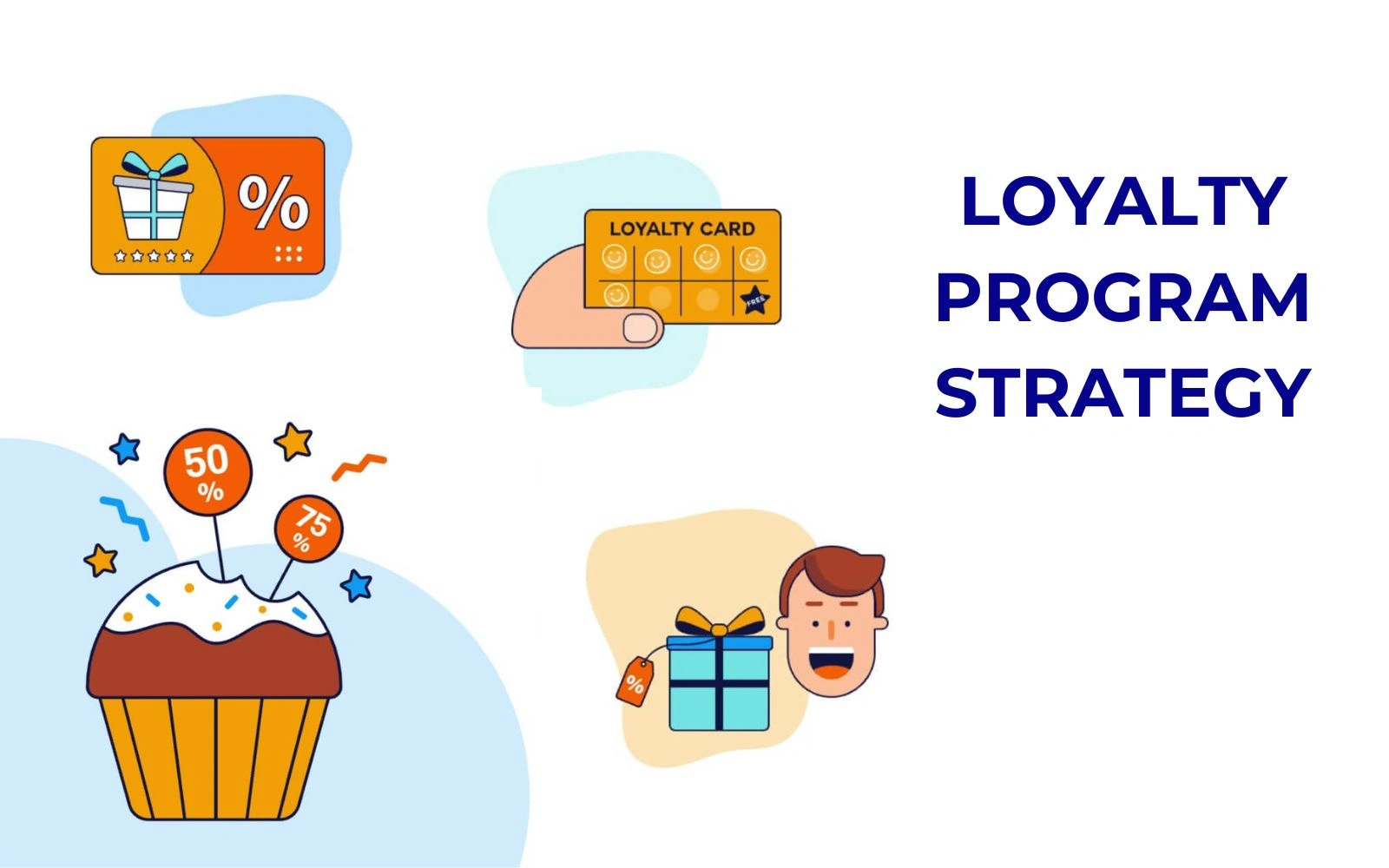
A well-crafted strategy includes key elements such as:
- The type of rewards (points, discounts, free products, VIP tiers).
- Customer engagement tactics (personalized offers, gamification, referral bonuses).
- Optimization methods (data tracking, A/B testing, customer feedback).
Having a well-defined loyalty program strategy offers several advantages:
- Enhanced customer retention: A strong strategy fosters long-term relationships, reducing churn and encouraging repeat purchases.
- Increased customer lifetime value (CLV): Engaged customers spend more over time, boosting revenue and profitability.
- Stronger brand loyalty: A well-structured program builds emotional connections, making customers less likely to switch to competitors.
- Improved customer insights: The strategy ensures systematic data collection, helping businesses understand buying behaviors and personalize offerings.
- Optimized marketing efficiency: A targeted approach reduces wasted marketing efforts and enhances customer engagement.
- Competitive advantage: A differentiated and well-executed strategy can set a brand apart in crowded markets.
Core Components of a Successful Loyalty Program Strategy
A successful loyalty program strategy is built upon several core components that work in harmony to foster customer engagement and brand loyalty.
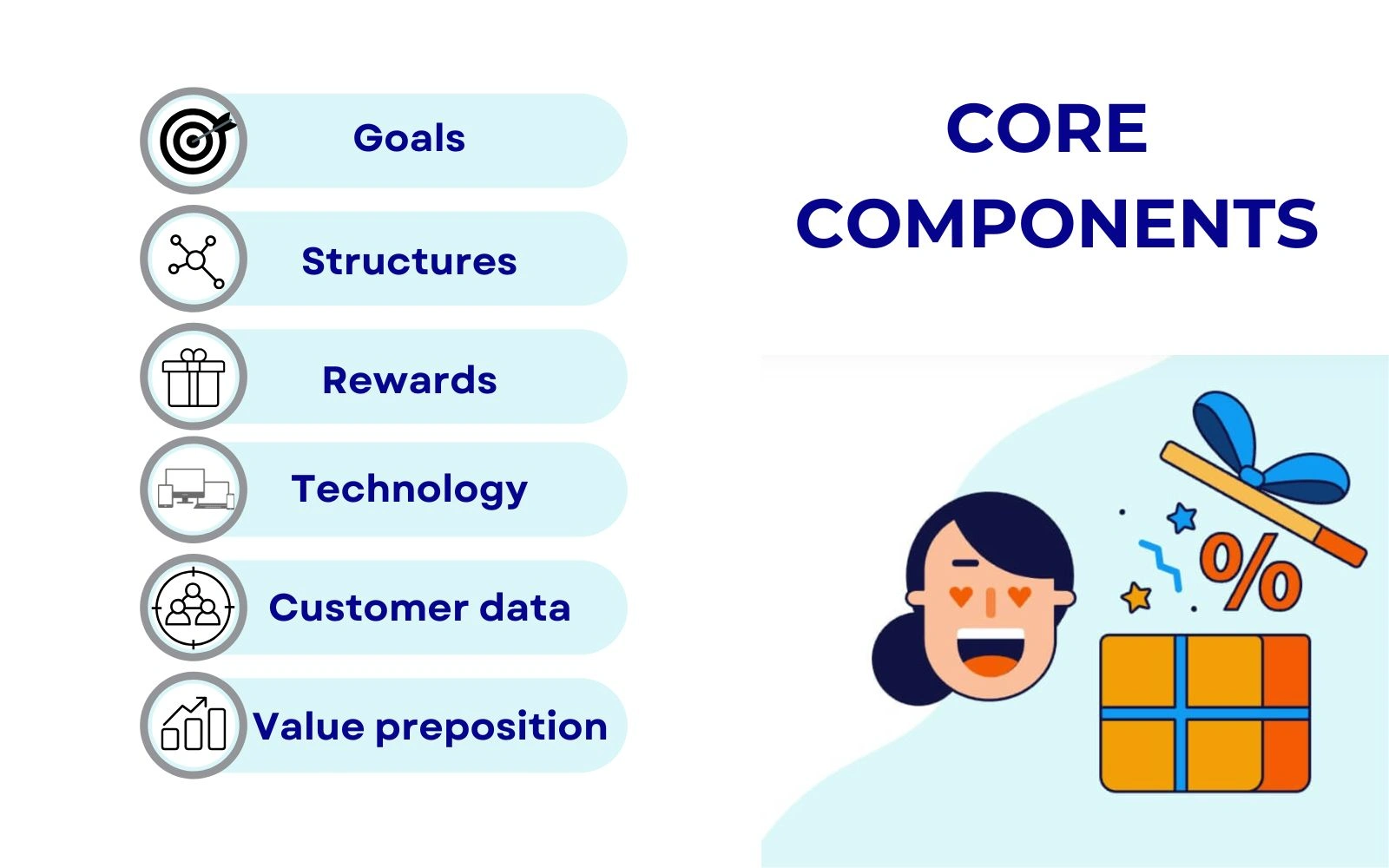
- Clear objectives: Establishing well-defined goals is the foundation of any effective loyalty program that guides the program’s design and implementation, ensuring alignment with overall business aims.
Decide whether the focus is on increasing repeat purchases, enhancing customer retention, or boosting brand advocacy to provide direction and measurable targets. - Simple and transparent structure: A loyalty program should be easy to understand and participate in. Complexity can deter customer engagement, so it’s essential to design a straightforward earning and redemption process.
Transparency about how rewards are earned, accumulated, and used builds trust and encourages continued participation. - Valuable rewards: The rewards offered must be meaningful and desirable to the target audience. They should align with customer preferences and provide real value, whether through discounts, exclusive experiences, or personalized offers.
- Technology integration: Leveraging technology is critical for a loyalty program’s smooth operation and scalability. It improves the customer experience and provides valuable data insights for continuous program optimization.
Using digital platforms allows for personalized communication, real-time tracking of customer behavior, and streamlined reward redemption processes. - Customer knowledge: A deep understanding of customer behaviors, preferences, and needs enables businesses to tailor their loyalty programs effectively. Gathering and analyzing customer data allows for segmentation and targeted marketing, ensuring that the program resonates with different customer segments.
- Compelling value proposition: A strong value proposition differentiates the loyalty program from competitors. It is rooted in delivering consistent, exceptional experiences that reinforce brand loyalty. It should articulate why customers should participate and how they will gain value from their involvement.
How To Design Your Loyalty Program Strategy
To draw an effective loyalty program strategy, you must take a series of deliberate and detailed steps aimed at understanding and engaging your customers.
Take a closer look at the process to get an optimal strategy
1. Know your audience:
Understanding your target audience is the cornerstone of a successful loyalty program.
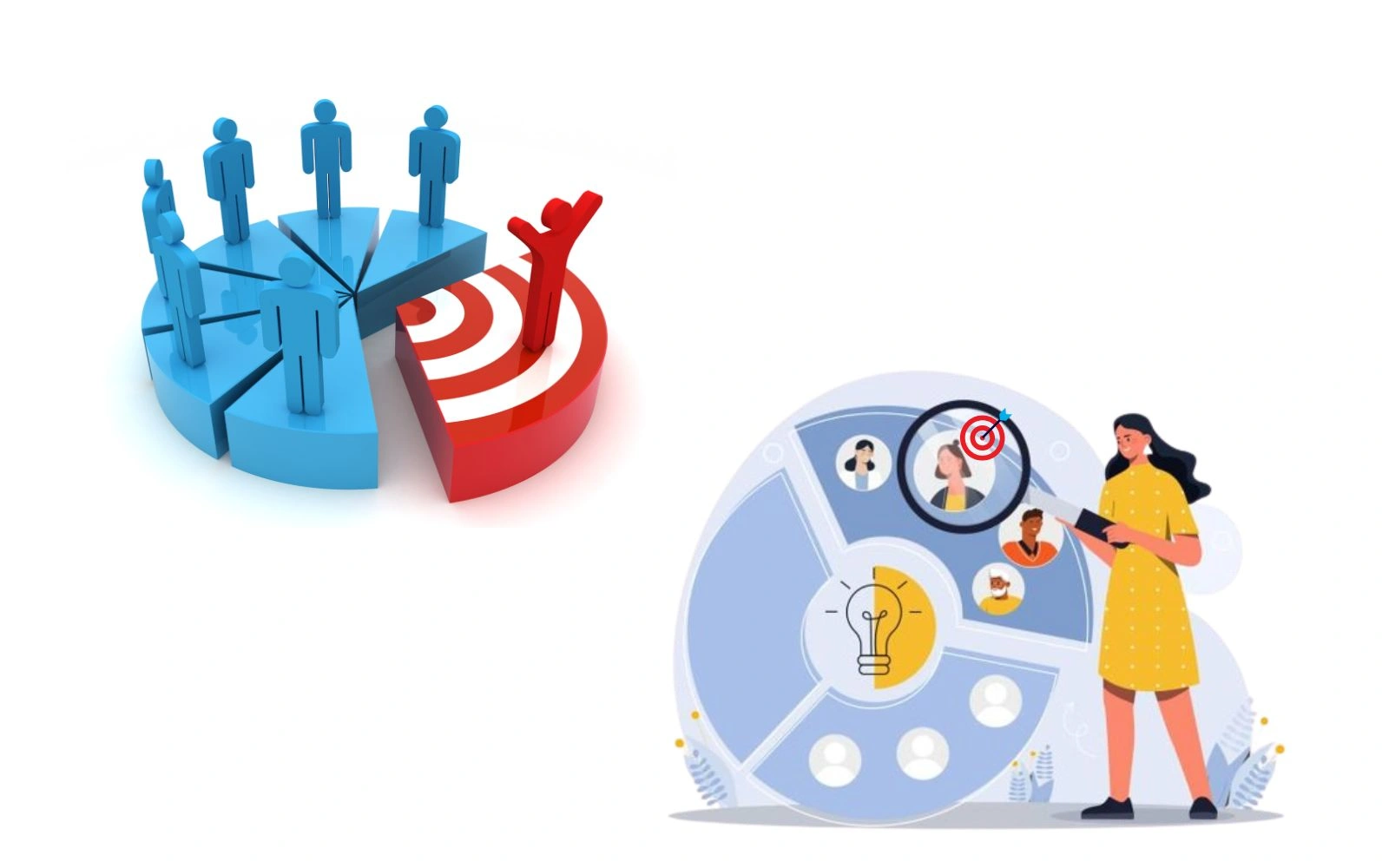
- Data collection: Various channels are used to gather data on customer demographics, purchasing behaviors, preferences, and feedback, which form the foundation for personalized loyalty initiatives.
- Customer segmentation: Segment your customer base based on common characteristics such as buying habits, purchase frequency, and engagement levels. This will enable tailored rewards and communications that resonate with different groups.
2. Identify motivations
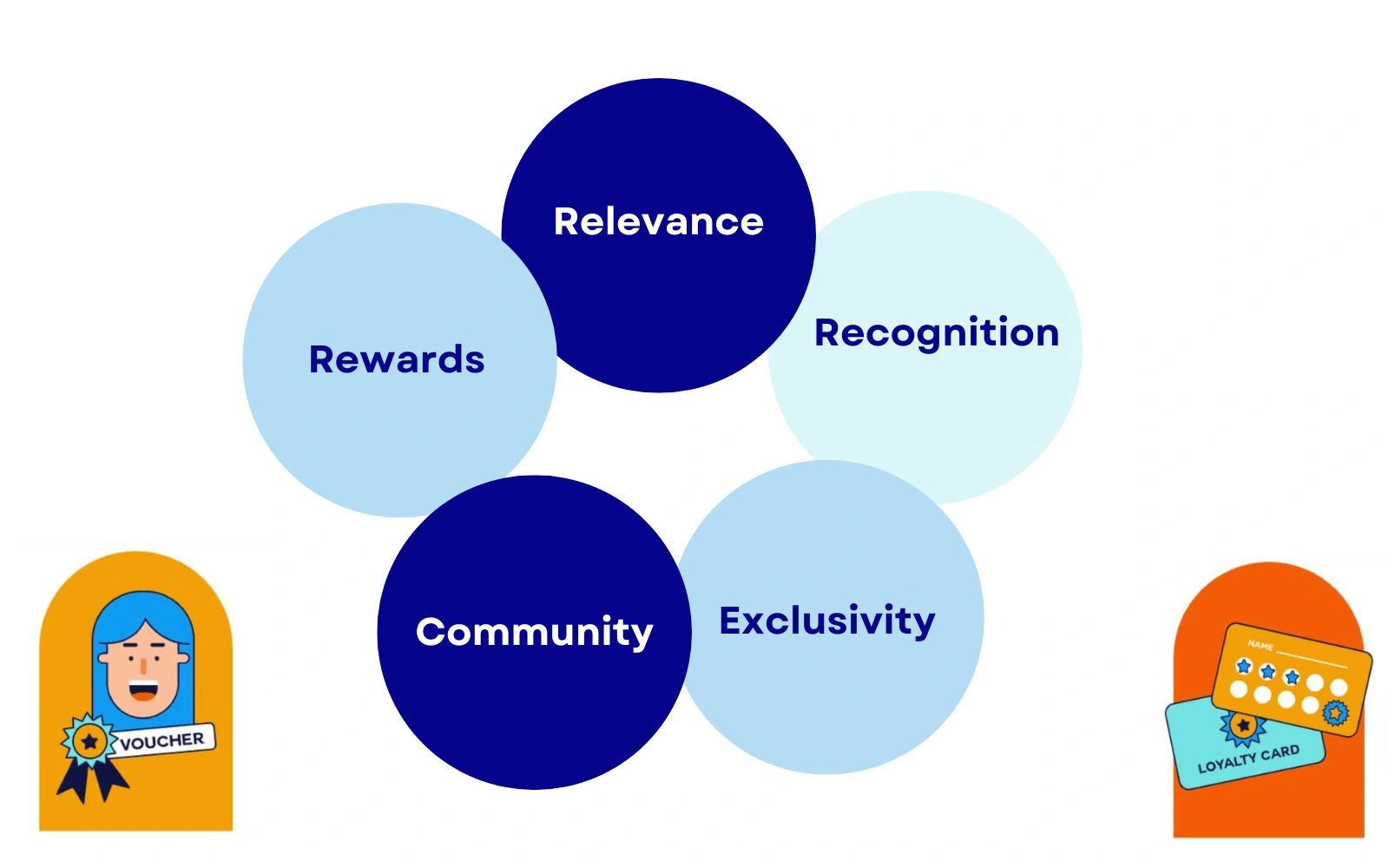
Recognize the factors that drive customer loyalty. Beyond the foundational “Three R’s”—rewards, recognition, and relevance—several key elements play a pivotal role:
- Rewards: Providing tangible incentives such as discounts, free products, or exclusive access can significantly enhance customer loyalty. These rewards offer immediate value and encourage customers to continue engaging with your brand.
- Recognition: Acknowledging loyal customers through personalized messages, special offers, or public appreciation fosters a sense of value and belonging. This recognition can strengthen the emotional bond between the customer and the brand.
- Relevance: It is crucial to ensure that your loyalty program aligns with your customers’ specific needs and preferences. Tailored rewards and communications demonstrate that you understand and value their individual preferences.
- Exclusivity: Creating VIP programs or special tiers fosters a sense of belonging and privilege among customers. This exclusivity can motivate customers to maintain or increase their engagement to access higher-tier benefits.
- Community: Building a community around your brand encourages social connections among customers. This sense of community can enhance loyalty as customers feel part of a larger group sharing common interests.
3. Analyze competitors
This analysis can inform your strategy, ensuring your program offers unique value propositions that set it apart to offer a more compelling loyalty experience.
- Research competitors’ loyalty programs to identify their strengths and gaps.
- Compare reward structures, engagement tactics, and customer benefits.
- Highlight what makes your brand unique and find ways to offer greater value, such as better perks, easier participation, or exclusive benefits.
4. Design engaging rewards and benefits
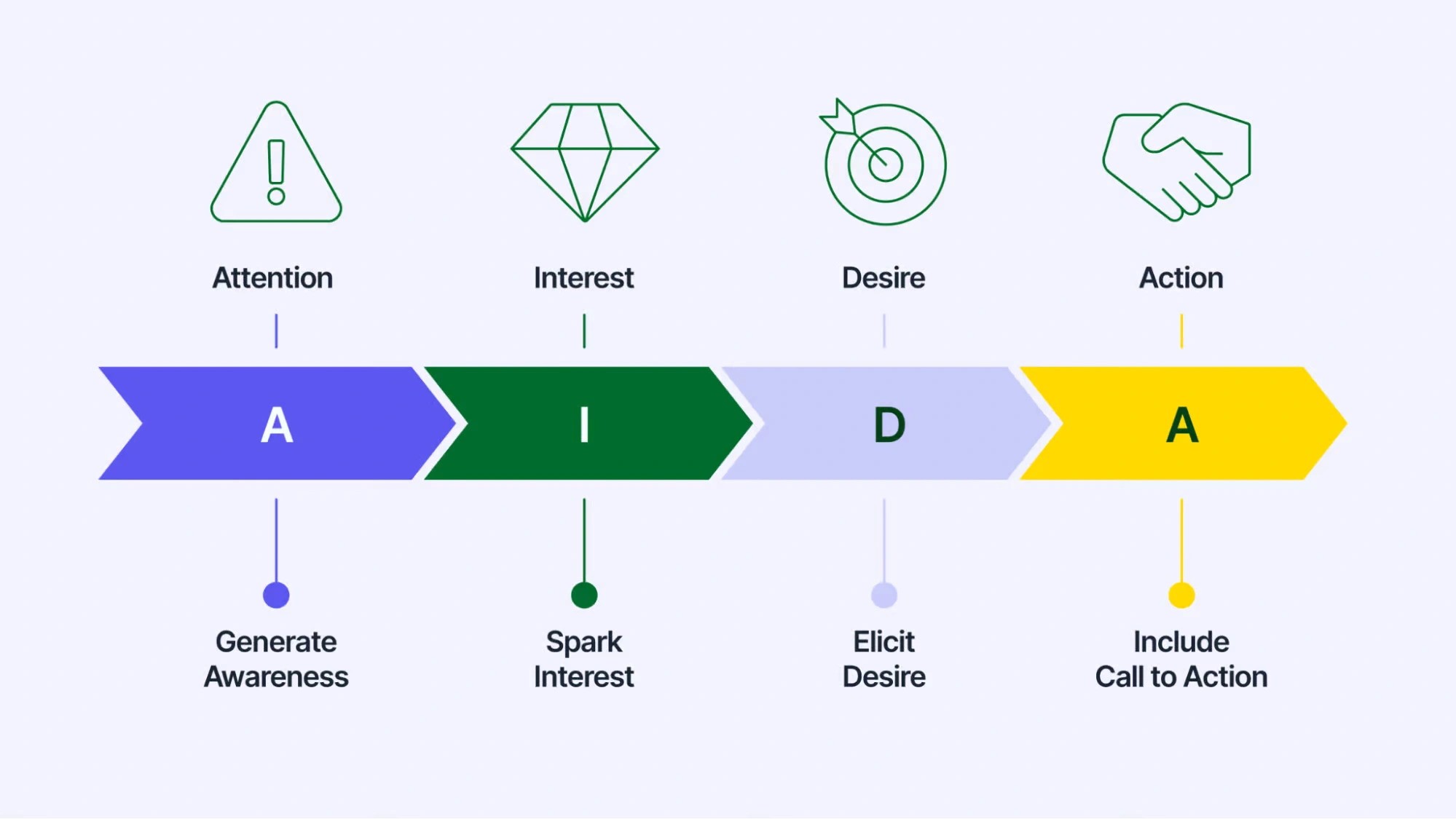
To design rewards that captivate and maintain customer interest, apply the AIDA Model, which guides the process through four critical stages:
- Attention: Create eye-catching promotional materials about the loyalty program. Use vibrant visuals, clear messaging, and omnichannel marketing to capture attention.
- Interest: Offer rewards that resonate with customer interests. Personalized offers based on purchase history and preferences enhance relevance.
- Desire: Build aspirational rewards that customers genuinely want. Utilize scarcity (limited-time offers) and exclusivity (VIP tiers) to heighten desirability.
- Action: Simplify the process to earn and redeem rewards. Ensure the program is user-friendly, with clear instructions and minimal barriers to participation.
When considering the types of rewards and benefits to include in your loyalty program, think beyond simple discounts. A diverse range of rewards can appeal to different customer motivations:
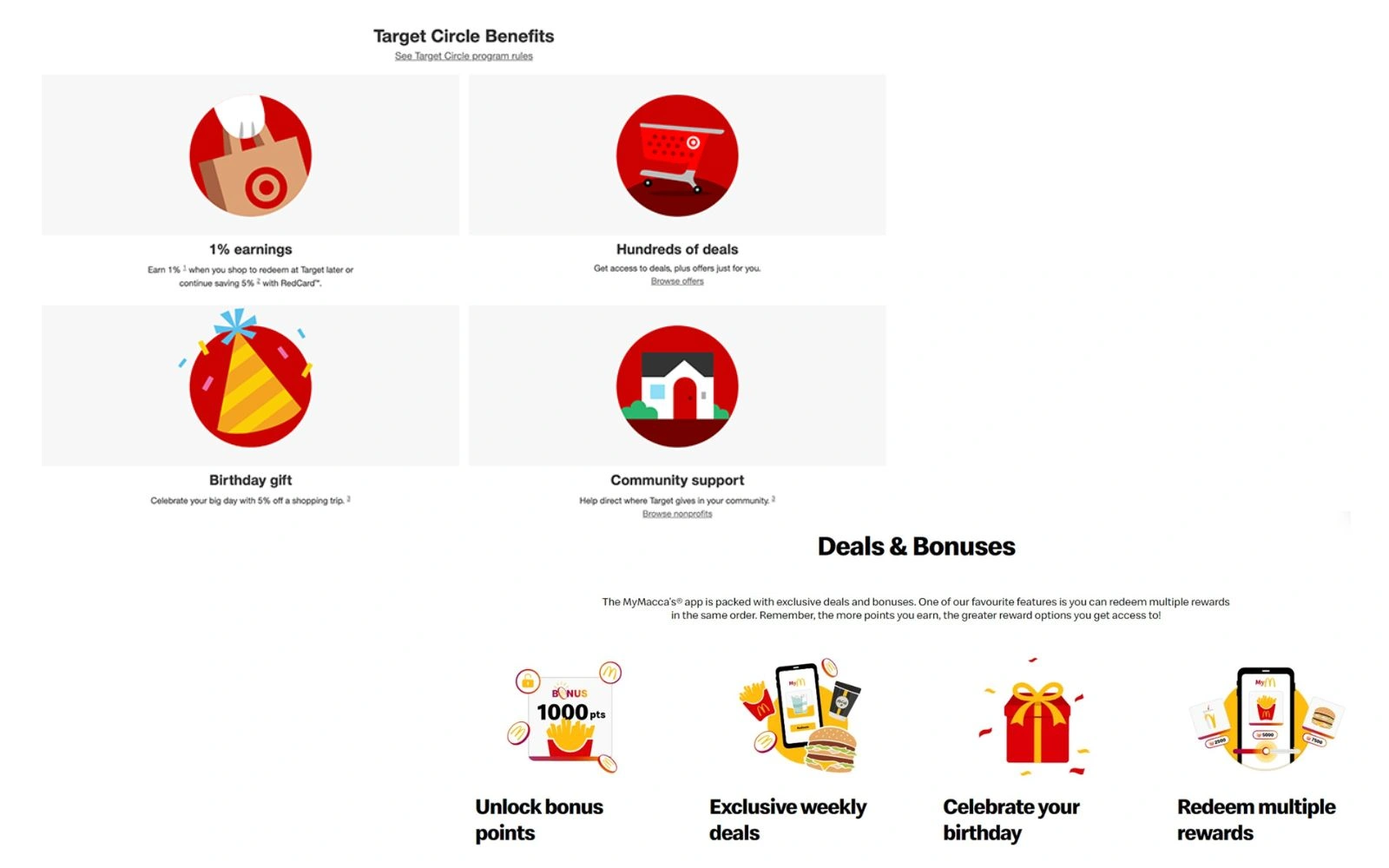
- Monetary rewards: Discounts, cashback, and gift cards.
- Experiential rewards: Exclusive events, early access to new products, and personalized services.
- Tiered benefits: Progressive tiers that offer increasing benefits to incentivize continued engagement.
- Surprise and delight: Randomized rewards to create positive emotional responses and strengthen brand affinity.
5. Choose a platform to implement your loyalty program

Selecting the right platform is essential for seamless execution.
So far, Joy Loyalty Rewards has been known as a robust loyalty solution for omnichannel implementation, allowing integration across online and offline touchpoints. It also facilitates real-time tracking, personalized rewards, and comprehensive analytics, enhancing the overall customer experience.
6. Launch and promote your loyalty program:
Once your program is designed, develop a comprehensive launch plan.
- Utilize various marketing channels—email campaigns, social media, in-store signage—to inform and excite your customers about the new program.
- Clear communication of the program’s benefits and how to participate will drive initial engagement and set the stage for long-term success.
How To Measure the Success of Your Customer Loyalty Program Strategy
Measuring the success of your customer loyalty program is critical to understanding its effectiveness and identifying areas for improvement. Key performance indicators (KPIs) and customer feedback play essential roles in this process.
Key metrics to track
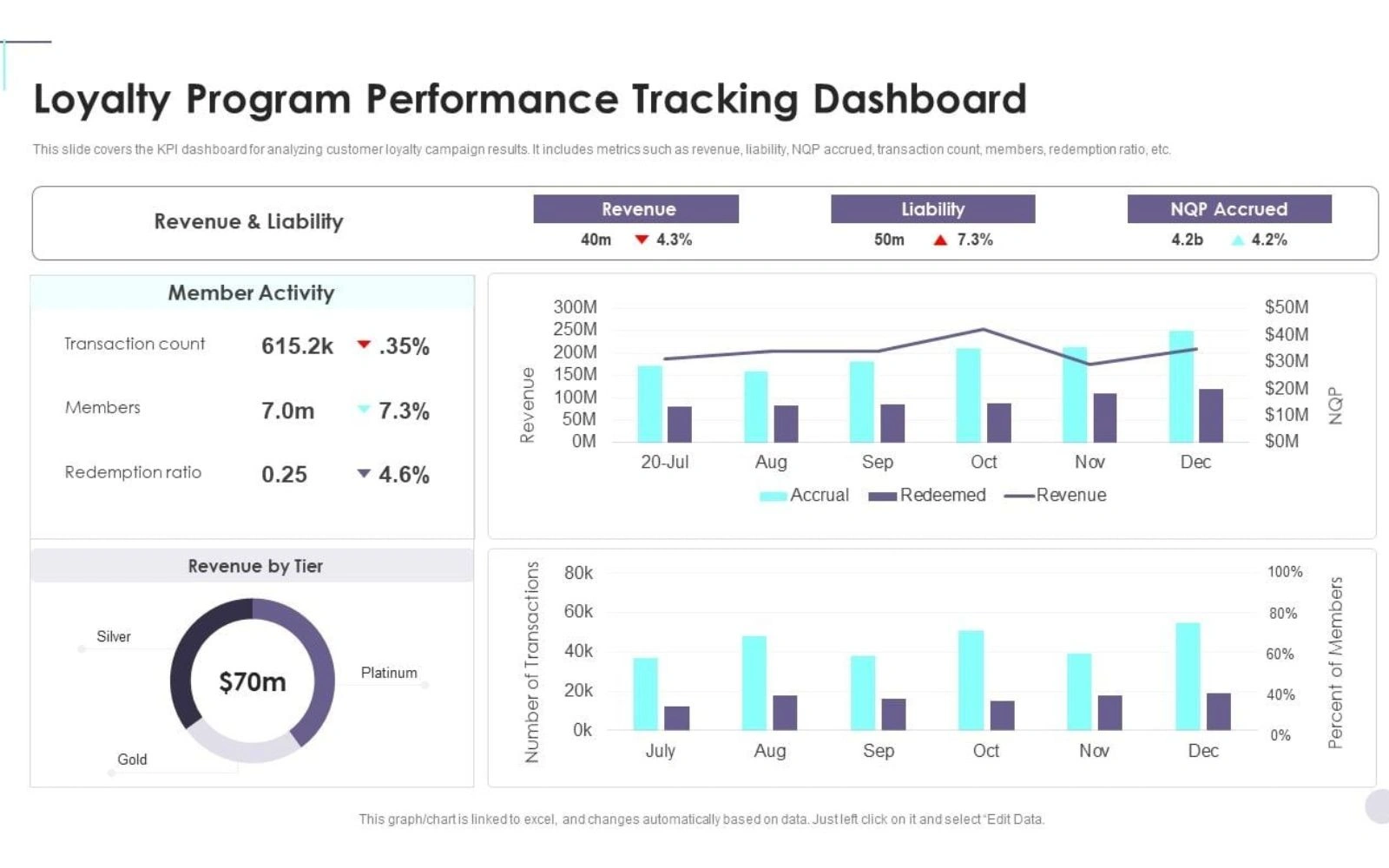
- Customer Retention Rate (CRR): This metric measures the percentage of customers who continue to do business with your brand over a specific period. A high CRR indicates strong customer loyalty and program effectiveness.
- Repeat Purchase Rate (RPR): RPR tracks the proportion of customers who make more than one purchase. A rising RPR suggests that the loyalty program is successfully encouraging repeat business.
- Average Order Value (AOV) measures the average amount spent per transaction. An increase in AOV can indicate that customers are making larger purchases, which could be influenced by loyalty incentives.
- Customer Lifetime Value (CLV): CLV estimates the total revenue a business can expect from a customer over the duration of their relationship. A growing CLV reflects the long-term impact of your loyalty program on customer spending and retention.
Using feedback
Regular feedback from loyalty program members provides qualitative insights that complement quantitative metrics:
- Surveys and questionnaires: Conduct regular surveys to gather customer opinions on the program’s strengths and areas for improvement.
- Customer reviews and testimonials: Analyze reviews to identify patterns in customer satisfaction and program effectiveness.
- Direct feedback channels: Utilize direct communication channels like customer support interactions to collect real-time feedback.
Refining the program
Continuous improvement is key to maintaining an effective loyalty program:
- Analyze performance metrics: Regularly review your KPIs to assess what’s working and where adjustments are needed.
- Adapt based on insights: Use customer feedback and data analysis to refine rewards, improve engagement strategies, and address any program gaps.
- Test and optimize: Implement A/B testing for different program elements to determine the most effective strategies.
💡 Discover Winning Strategies with These Loyalty Program Examples
Bottom Line
Strong loyalty program strategies create meaningful connections that keep customers engaged and invested in your brand. By understanding your customers, setting clear objectives, choosing the right structure, and offering valuable rewards, you can create a loyalty program that’s a win-win for both you and your customers.


